Top Nature Cams
Nature Cams: The Best Kind of Reality TV!
1. Salmon Cam: A Live Look at Migratory Fish
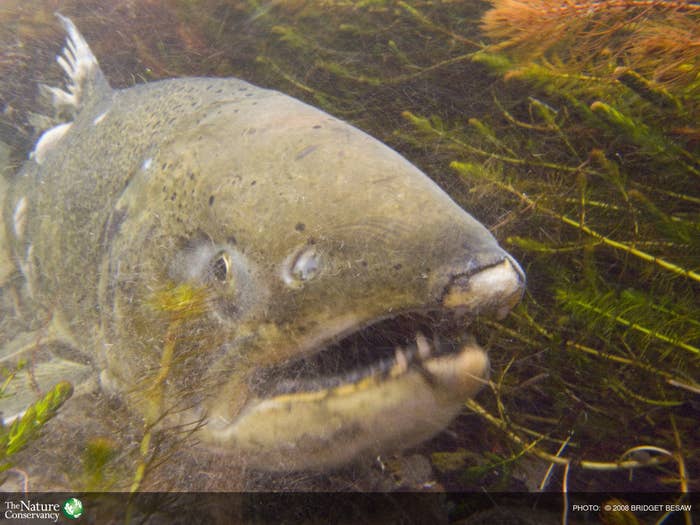
The Nature Conservancy's Salmon Cam is a live view at the Chinook and coho salmon and steelhead trout that are spawning on the Shasta Big Springs Ranch in California.
Last year, more than 7,500 Chinook salmon made their way back to the Shasta River, and many were able to be viewed as they swam past Salmon Cam. Six years ago, you could have watched this camera for hours and likely would not have seen a salmon.
The Conservancy and partners worked on restoration projects to welcome salmon back to waters where they historically spawned. And it worked — dramatically. For years, these partners have worked to improve fish habitat. Projects included fencing cows out of the streams, screening of water diversions to keep fish from accidentally ending up in fields and ditches, and planting trees to stabilize stream banks. The latest success is due in part to water users voluntarily leaving water in the stream to provide fish the water they need for migration and spawning. It’s working, with a record number of fall spawning Chinook salmon recorded in 2012. And hopefully those numbers will only grow!
2. Osprey Nest Cam
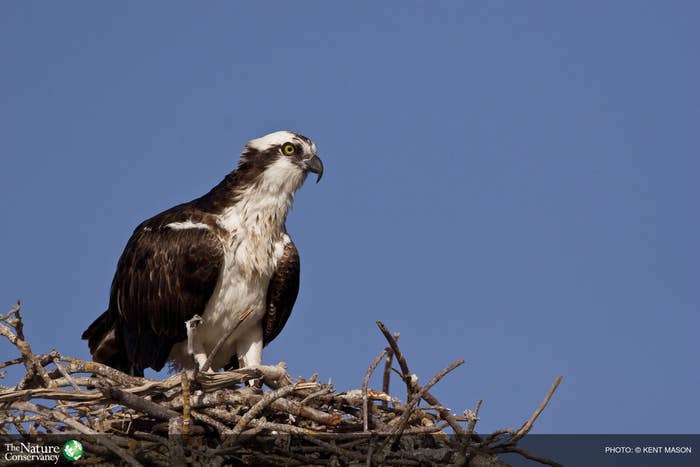
You may be asking yourself: Why should I care about the osprey?
1. The survival and proliferation of this osprey family is rooted in a healthy and resilient ecosystem. Consisting on a diet of almost exclusively fish, they tend to live near large bodies of water where their primary source of food is plentiful. For that reason, the presence of ospreys is often viewed as an indicator that something is going well in the environment. It means there are fish that are big enough and virile enough to support a healthy balance of predator and prey interactions.
2. They are just cool! They are the only type of hawk or eagle that dive all the way into the water to catch fish. They dive feet first and catch fish with their sharp talons. They also have a reversible outer toe that they use to point their fish head-first, which makes them more aerodynamic during the flight back to the nest.
3. Ospreys have made a dramatic comeback since their sharp decline between 1950 and 1970. The United States’ ban on DDT in 1972 is largely thought to be the reason for their comeback. This apparent change in populations and health over that period of time has implications for ospreys’ sensitivity to the environment. If ospreys are declining, then the health of the resources they depend on is decreasing as well.
3. Puffin Cam from Explore.org
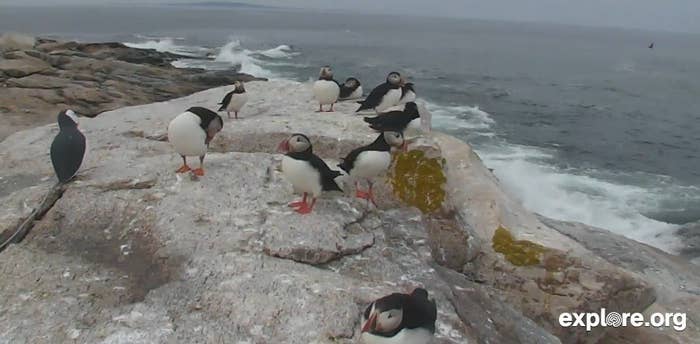
Here are some fun facts about these cute seabirds!
There are only three species of puffins in the world. They all have brightly colored beaks during the breeding season to attract mates, but they lose the bright colors by shedding an outer layer of the beak for the winter (non-breeding) season. The colored outer layer then grows back before the start of the next breeding season.
Most birds that live on the water are buoyant—they float very well. In fact, the way they stay underwater to feed and dive is by essentially flying under water using their wings, like penguins. They even mate underwater!
Puffins are pelagic birds, meaning they are found out in the open ocean. In the case of puffins, they spend the non-breeding season well away from land in the north Atlantic Ocean, foraging for fish and other foods.
The Atlantic Puffin is found on both sides of the north Atlantic Ocean, from Maine to northern Canada on the west side, off Greenland, to Iceland, the United Kingdom, and northwest France on the east side. Puffin populations currently are relatively stable across their range, with almost all nesting colonies occurring within protected areas.
But, puffins remain potentially vulnerable due to their habit of nesting in densely concentrated colonies (over 50% of North American Atlantic Puffins occur in Witless Bay, Newfoundland) and changes to prey distribution from climate change and overfishing.
4. Loon Cam from Minnesota Bound
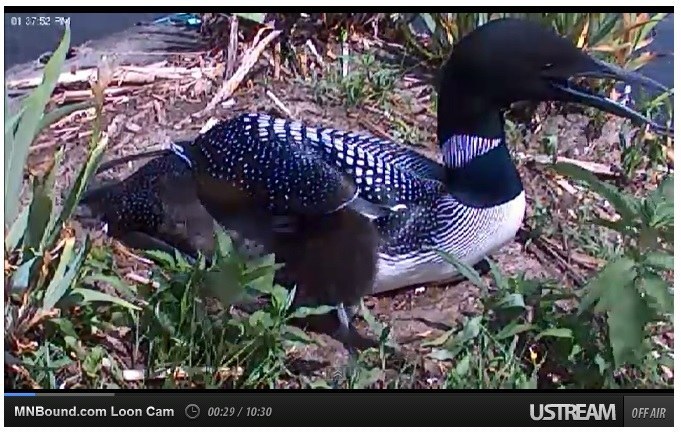
*See the baby loon cuddling under the parent's wing?
The common loon is Minnesota’s state bird. It's best known for its wailing call, which naturalist John Muir called “One of the wildest and most striking of all wilderness sounds.” Larger than a mallard duck and smaller than a Canada goose, the common loon’s distinctive breeding plumage is velvety black with a slight greenish gloss on the head and pure white on the underside. A striking white “string of pearls” graces its neck like a necklace.
Though most birds have hollow bones optimized for flight, loons have nearly solid bones optimized for diving as deep as 200 feet below the water’s surface in search of fish, frogs, leeches, crayfish and other prey. The extra weight means that they need a runway of over 100 feet to get airborne—as they paddle furiously across the water’s surface—but once aloft they can reach speeds in excess of 55 miles per hour.
When breeding, loons will usually build large, bulky nests at the water’s edge of clear, quiet lakes. The birds usually mate with the same partner each spring, their quiet courtship displays of simultaneous swimming, head posturing, and short dives serving mostly to renew their pair bonds. Clutches typically consist of 2 eggs, which incubate about a month. Chicks leave the nest within 24 hours, but adults carry them on their backs for the first 3 weeks and provide most of their food for the first 8 weeks. They begin to fly after 11-12 weeks and reach sexual maturity around age 2-3.
Though common loons are protected by the federal Migratory Bird Treaty Act of 1918, they continue to face a number of threats. They are particularly vulnerable to human disturbances at their breeding lakes because harassed adults will abandon nests, sometimes for more than an hour, increasing the risk of nest predation by raccoons, crows, snapping turtles and other predators. Continued harassment can cause birds to move off a lake completely. Lakeshore development also impacts their breeding habitat, and mercury contamination is having a long-term impact on survival and reproductive success. Protection of prime habitat is the best conservation practice currently available.
5. Elephant Cam from Tau Game Lodge

As the largest land animal, these African elephants reach up to 24 feet in length and 13 feet in height. They are found in most African countries, living in varied habitats from the open savanna to the desert and high rainforest. These animals can weigh up to 11 tons and live up to 70 years, longer than any other mammal except humans. They are herbivores and need to eat about 350 pounds of vegetation daily.
In addition to two prominent tusks, which are present in both sexes, the elephant is characterized by its two large ears, pillarlike legs, thickset body and a large head with a muscular, mobile trunk. The trunk is a strong appendage, with more than 40,000 muscles and tendons. Its sensitive tip ends in two finger-like projections, which can manipulate small objects (like peanuts!). The trunk can lift objects of more than 400 pounds. Water is sucked up through the trunk and then blown into the mouth for a drink or onto the back as a cooling mist.
Elephant herds consist of related females and their young, and are managed by the eldest female, called the matriarch. The adult male elephant rarely joins a herd and leads a solitary life, only approaching herds during mating season. Females give birth to a single calf after 22 months of gestation (i.e. pregnancy), the longest gestation period among mammals.
Because elephants require substantial amounts of food and a large area in which to forage, habitat destruction across their range is a major threat to survival. Hunting and poaching have caused the most serious damage to elephant populations. Humans kill elephants primarily for their tusks, and the population was decimated nearly to the point of extinction throughout the 19th and 20th centuries. Elephants are still considered to be highly threatened with extinction in several areas of their range. In 1988, the international ivory trade was banned in an attempt to control poaching. This level of protection has been partially successful, although illegal poaching is still common in many areas.
6. Bee Cam from National History Museum (UK)
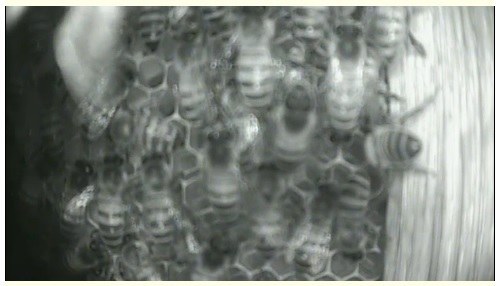
What's the buzz about bees? Lately there seems to be a lot of talk about bees, honey bees in particular.
Honey Bees: Nature's Greatest Pollinators
The honey bee is the greatest pollinating machine when it comes to agriculture. Their large perennial colonies can be moved to wherever they are needed and they can communicate direction and distance from the hive to nectar sources. Honey bees also practice flower fidelity which makes them very efficient pollinators. Flower fidelity is the habit of concentrating on one specific species of flower when gathering and transferring pollen even though the insect is attracted to a large variety of flowers. Honey bees are also excellent at finding the most abundant and sweetest source of nectar near the colony.
Colony Collapse Disorder
In recent years, there has been a drastic and mysterious die-off of honey bee colonies. Although not unusual in the bee business, this latest decline in populations has many people talking. There are several reasons as to why this may be happening, including: loss of habitat, pesticide use, unspecified fungal diseases or mite infestations.Scientists now believe that much of the decline is due to Colony Collapse Disorder, or CCD, which refers to the unexplained disappearance and dying of honey bee colonies. Little is known about CCD, and that has many beekeepers, farmers and the general public worried.
Every few years or so, there seems to be a large die-off of bees that concerns scientists, agriculturalists and beekeepers. In the late 1980's tracheal and varroa mites infested beehives and decimated bee colony populations. Then in the fall of 2006, a problem was noticed that was first called “fall dwindling” but was later renamed as Colony Collapse Disorder (CCD). CCD is characterized as a sudden die-off of bee colonies brought on by the disappearance of adult bees from their hives. Although honey bee colony losses are not uncommon, current losses seem to differ from past situations in that: adult bees are not returning to the hive - which is uncharacteristic of bee behavior; losses have occurred rapidly and in large numbers; and, most importantly, the reason why these losses are occurring is unknown.
Become a Community Contributor.

